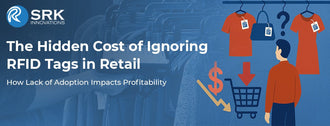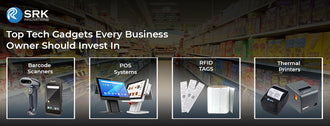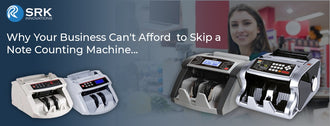
RFID Read Range Explained: 5 Things You Need to Know
- Barcode, NFC Business Cards, Pinter, POS System, RFID, smart cities
- 26 Aug, 2025
Unlock the full potential of RFID with “RFID Read Range Explained: 5 Things You Need to Know.” At SRK Innovations, we’re committed to helping you improve RFID read range, elevate RFID performance, and drive unrivaled RFID efficiency across your operations.
Why Read Range Matters for RFID Efficiency
-
Optimized Scanning Coverage
A solid RFID read range ensures that readers can capture tags quickly—whether on a conveyor belt, in inventory racks, or through access gates—boosting asset tracking speed and reducing missed reads. -
Reduced Infrastructure Needs
When read range is maximized, you need fewer devices to cover the same area, resulting in cost savings—an essential piece of RFID system optimization. -
Superior Operational Performance
Better read range translates to more reliable scanning, less manual intervention, and smoother workflows—all hallmarks of strong RFID performance.
5 Key Factors Affecting Read Range (and How SRK Innovates Around Them)
1. Tag & Reader Quality
High-quality components are critical. SRK Innovations offers UHF RFID readers and RFID tags with exceptional range and robustness—such as the UHF Walkthrough Gate Readers, UHF Integrated Readers, and durable tags like the UHF Fold Metal Label and Cable Tie Tags.
2. Operating Frequency & Power Output
RFID systems operate across LF, HF, and UHF bands. UHF (840–960 MHz) generally provides the longest range, especially when paired with powerful readers and proper antenna setup. SRK’s UHF readers and tags—engineered for this frequency—support enhanced RFID efficiency.
3. Antenna Design & Placement
Antennas influence coverage geometry and sensitivity. SRK’s products, such as the SRK-6GWL reader (which features a 9 dBi antenna for up to 9 m read range), exemplify how antenna design directly enhances RFID performance. Optimal placement further ensures wide and consistent scanner coverage.
4. Environmental Conditions & Material Interference
Tags on metal or near water can suffer interference. SRK counters this with specialized tags like the UHF Fold Metal Label Tag and Cable Tie Tag, built for reliability even in challenging industrial environments—with read ranges tailored for such conditions..
5. Reader Configuration & System Tuning
Fine-tuning reader settings—such as transmit power, sensitivity thresholds, and scan timing—is a smart way to optimize RFID system efficiency. SRK’s readers support such configurability, and pairing them with inlays like UHF Soft Label Tags or Vehicle Soft Label Tags ensures the entire system is tuned for ideal performance.
At a Glance: SRK Innovations’ RFID Solutions and Read Range Performance
|
Product Category |
Read Range |
Key Advantages |
|
UHF RFID Smart Cards (PVC) |
Up to 10-12 m |
Long-range ID access, versatile customization |
|
UHF Fold Metal Label Tag |
Around 6 m |
Durable for metal surfaces; indoor use. |
|
RFID Cable Tie Tag |
Up to 10 m (reader-dependent) |
Rugged for logistics, dust- and water-resistant |
|
SRK-6GWL UHF Integrated Reader |
Up to 9 m |
Wi-Fi/LAN connectivity, strong antenna |
Driving RFID Efficiency with SRK Innovations
By understanding the factors affecting RFID read range—from tag and reader quality to environmental interference—you can strategically improve RFID read range and elevate system performance. SRK Innovations offers a comprehensive portfolio—from UHF tags and readers to inlays and smart cards—designed to help you optimize every inch of your RFID deployment.










































